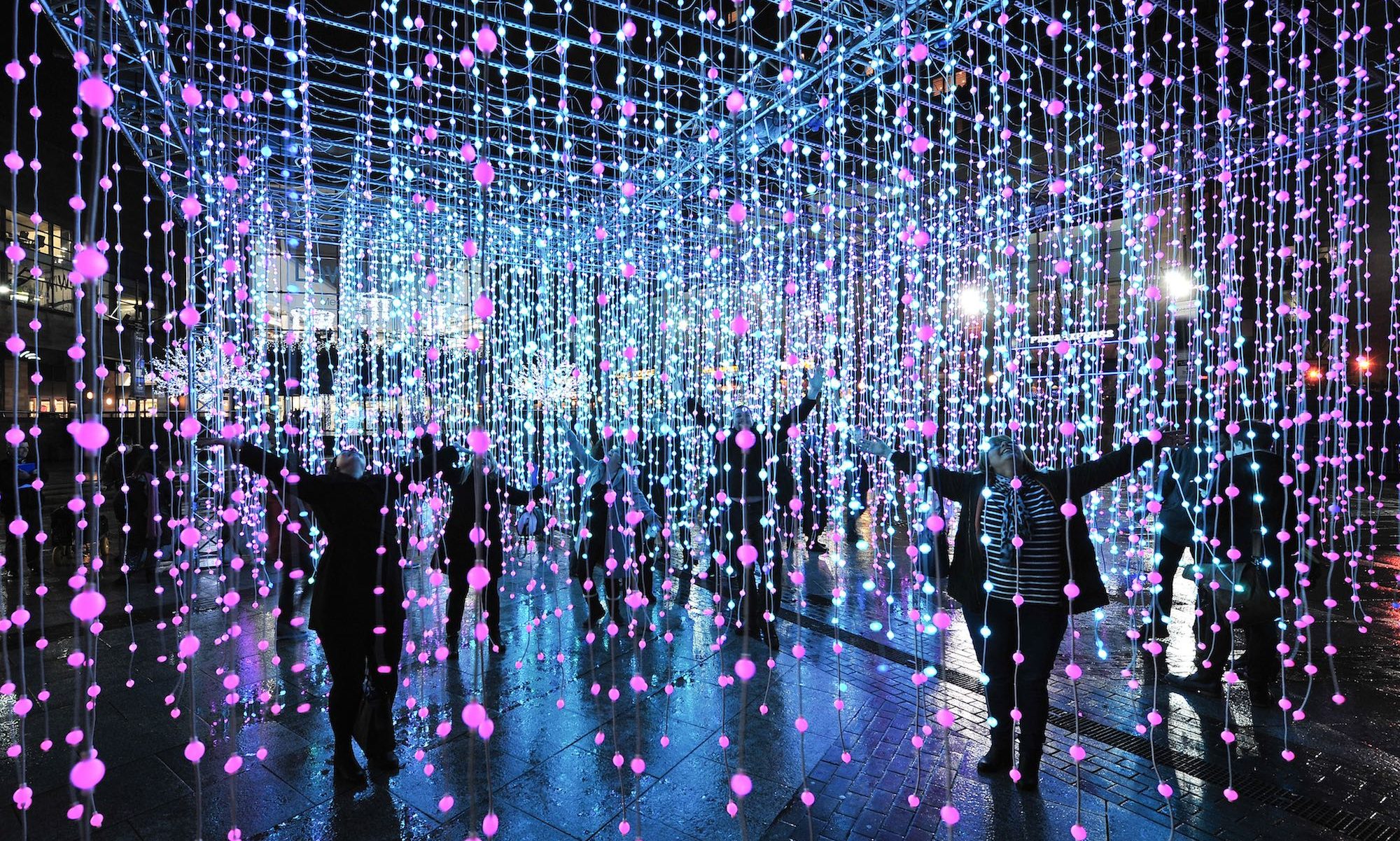I started the journey of creating my project thinking of the opposite of minimalism, but ended up reaching a very simple and modern final product. My initial idea was to create something exemplifying light pollution in cities.

This idea was to have a set of string lights set up to act as stars in a box, in addition to a central light which would represent the city lights. When the inner light was on, it would be harder to see the star lights. 
I began this portion of my experimentation by creating the canvas box everything would go in. I initially was really interested in utilizing paint and traditional artistry techniques in order to challenge myself as painting is not something that comes naturally to me.

This iteration turned out much less impressive than I was originally hoping. I felt the light was not creating the effect I was hoping for, in addition to the painting being of lack luster skill. I think this was a really good idea which I am still interested in, but was not passionate enough to see it through for this project.
Since I found in my first attempts that canvas was quite thick, and with paint merely reflected light inwards, I wanted to play with the idea of dimensional shadows. I made a second iteration using water colour paper in an attempt to get the color to bleed through into the shadows. I set up a small model to experiment with utilizing dimension.

This idea once again felt as though it was failing to utilizing the properties of light in an artistic manner. I found myself trying to rely on the shapes of the paper and the artistic skill put into the painting rather than manipulating the light. This lead me to iteration number three.
In iteration number three, the concept was to set up a bunch of random objects I use for climbing and create an interesting shadow which I could add art to the background to meld the two forms of lines together. I really enjoyed this idea because I felt I was finally getting somewhere with using light in a way to capture a piece of art in the form of a shadow.

The downfall of this idea was once again relying on my own artistic ability and trusting myself to make some sort of world within the confines of the lines of the shadow. This idea would also be very hard to transport as nothing was set solidly in play. With each iteration I found myself stripping more and more away from the designs leading me to stare at the shadows different paper and objects made coming from different light sources to truly immerse myself in the shadow art.
I hot glued white canvas together as a backdrop, an idea that came from iteration one with the idea of creating a confined space. After experimenting with camp lamps, desk lamps, work lamps, flashlights, LED’s, halogens, I finally settled on using a simple LED flashlight.

As far as the content of the shadow, I was really interested in the idea of creating an optical illusion. I think it really speaks to the idea that although you can see a shadow, you can’t actually see where it is coming from. I chose the simple two faces or a vase optical illusion. In addition to setting up my simple paper cut out, I built a periscope for the viewer to be able to interact more with the piece. The periscope serves to allow the viewer to see what is causing the shadow, while still separating them from it. The cutout piece of paper will feel further away and separated from the shadow itself because the two are never seen at the same time due to the periscope.

The final result of my project produced a really interesting shadow which could be perceived as two people talking, or a white projection of a vase. The flashlight I used worked with 3 pointed LED’s which created a really interesting dimensional effect.

My project completely changed from the ideas I initially started out with, however I enjoyed stripping each idea down until I was left with simple shadow art. I think because it took so many iterations for me to reach a final concept I was truly able to embrace the minimalist design. I was able to focus on the light and what the light was doing with my piece rather than trying to add unnecessary paining or drawing. Part of what is so interesting about shadow art is that when you turn the light off, the art is gone. The light does all the drawing for you. I believe going through this struggle helped me create a piece I enjoyed and gave me a deeper appreciation for light art.
Minimalism: a trend in sculpture and painting that arose in the 1950s and used simple, typically massive, forms.
Also something Lauren should have embraced earlier on in her light art project.





































